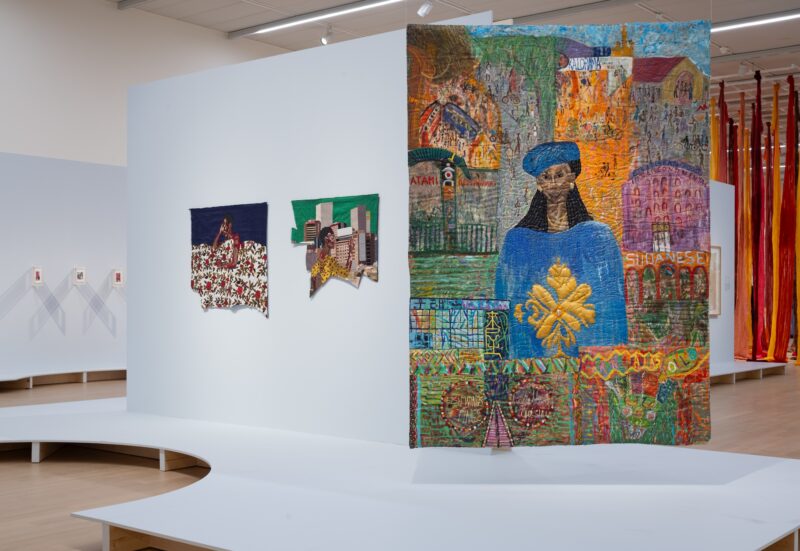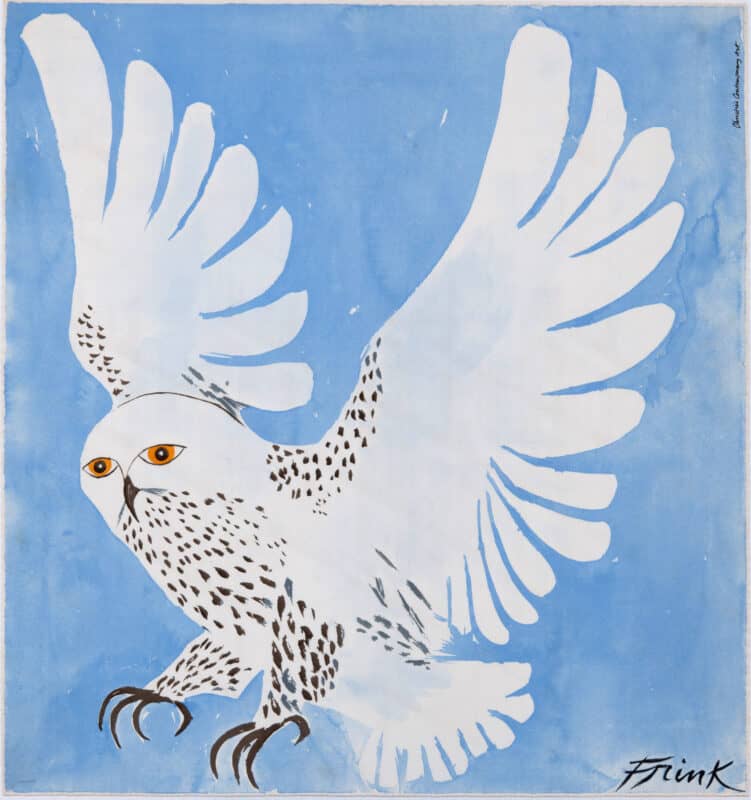
Fátima Rodrigo is a textile artist from Peru’s capital Lima, whose hand-embroidered work celebrates Latin American popular culture. Engaging with politics, the construction of tradition, and the importance of championing alternative voices and aesthetics to those typically celebrated in the West, her work and techniques highlight the presence of community in culture, and the importance of acknowledging cultural exchange in the creation of art. Currently showing at Cecelia Brunson Gallery in Borough, her latest show ‘Piedra de sol, serpiente de humos’ marks her second UK show, and is exemplary of her wider practice.

Drawing inspiration from a variety of sources, Rodrigo’s work extracts meaning from a blend of what is traditionally considered ‘high’ and ‘low culture’, exploring how postmodernity constructs the present and its attitudes toward art. Bringing together quotes from films, exhibitions from modern art history, iconography from Andean culture, Pre-Columbian imagery, and 20th-Century poetry, the textiles are as much a collage of psychic materials as fabrics. Visually complex, the images depicted evade any single point of focus, nexus of drama, nor privileged position, creating spaces to explore and patterns to trace with the eye that resist interpretation. The effect created is one of being met with ‘culture’ as an object itself, as something that refers both to a texture that can’t be reached, in its tantalising use of fabric, and a textuality that is similarly distant despite being readily presented. Layering blocks of colour alongside recognisable icons like the serpent and the eye whilst showing them outside their original history and cultural narratives, Rodrigo creates a beguiling effect wherein the viewer is drawn always to look for more, to seek out meaning without being able to glean the background of the images from the work itself. A certain kind of structure is present, though one that points more towards the internality of the artist than an inherited narrative.

In fact, Rodrigo has made her name as an artist by challenging these very narratives themselves. Consciously engaging with the colonial history of Latin America, Rodrigo’s work seeks to directly challenge the implicit values held by the art establishment, particularly its preference for both European aesthetics and a Western lens on global cultures. Using readily available materials to craft textiles that reference Latin American culture across time, Rodrigo’s work touches upon the process of how we imbibe influences that can define our taste, especially in context to Latin American art, where such preferences can play into the erasure of the region’s colonial past. The typically Western preference for Latin American products that are perceived as ‘traditional’, ‘handcrafted’, and ‘precolonial’ are elegantly subverted by Rodrigo’s practice. Whilst producing handcrafted goods herself, Rodrigo does so with cheap plastic materials imported from abroad, drawing attention back to her presence as an artist of the 21st-Century and highlighting the historical fact that the impact of colonialism on Latin American culture cannot be undone.

‘Piedra de sol, serpiente de humos’ is the latest show in Rodrigo’s ‘Contradanza’ series, itself named after a traditional form of dance brought to Latin America by Spanish colonisers that has been adapted, co-opted, and eventually used to mock colonial powers by its practice by indigenous populations in Peru. A remarkable, lucid, and critically alight collection of works, it marks a highlight of the gallery’s local art scene, showing until December 13th.

Fátima Rodrigo Piedra de sol, serpiente de humos – 13th December 2024 Cecilia Brunson Projects







